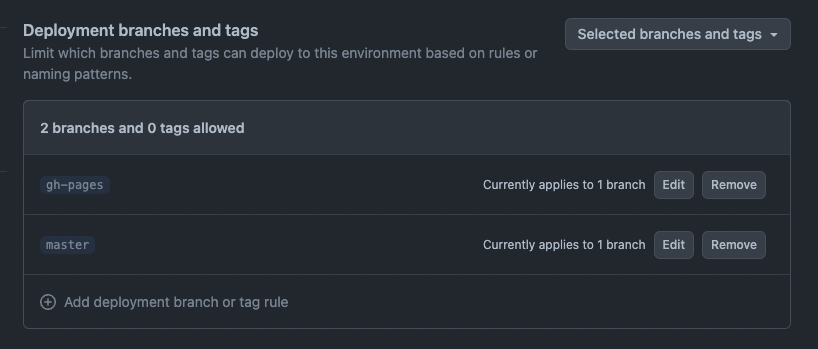This template demonstrates how developers can implement a single-page application on the Telegram Mini Apps platform using the following technologies and libraries:
The template was created using npm. Therefore, it is required to use it for this project as well. Using other package managers, you will receive a corresponding error.
If you have just cloned this template, you should install the project dependencies using the command:
npm installThis project contains the following scripts:
dev. Runs the application in development mode.build. Builds the application for production.lint. Runs eslint to ensure the code quality meets the required standards.deploy. Deploys the application to GitHub Pages.
To run a script, use the npm run command:
npm run {script}
# Example: npm run buildBefore you start, make sure you have already created a Telegram Bot. Here is a comprehensive guide on how to do it.
Although Mini Apps are designed to be opened within Telegram applications, you can still develop and test them outside of Telegram during the development process.
To run the application in the development mode, use the dev script:
npm run devAfter this, you will see a similar message in your terminal:
VITE v5.2.12 ready in 237 ms
➜ Local: http://localhost:5173/reactjs-js-template
➜ Network: http://172.18.16.1:5173/reactjs-js-template
➜ Network: http://172.19.32.1:5173/reactjs-js-template
➜ Network: http://192.168.0.171:5173/reactjs-js-template
➜ press h + enter to show helpHere, you can see the Local link, available locally, and Network links accessible to all
devices in the same network with the current device.
To view the application, you need to open the Local
link (http://localhost:5173/reactjs-js-template in this example) in your browser:
It is important to note that some libraries in this template, such as @telegram-apps/sdk, are not
intended for use outside of Telegram.
Nevertheless, they appear to function properly. This is because the src/mockEnv.js file, which is
imported in the application's entry point (src/index.js), employs the mockTelegramEnv function
to simulate the Telegram environment. This trick convinces the application that it is running in a
Telegram-based environment. Therefore, be cautious not to use this function in production mode
unless you fully understand its implications.
Although it is possible to run the application outside of Telegram, it is recommended to develop it within Telegram for the most accurate representation of its real-world functionality.
To run the application inside Telegram, @BotFather requires an HTTPS link.
This template already provides a solution.
Navigate to the vite.config.js file and uncomment the usage of the basicSsl function. This
function utilizes
the @vitejs/plugin-basic-ssl plugin, which
enables the creation of an HTTPS link. Note that this plugin generates a self-signed certificate,
which browsers will recognize as unsafe, resulting in a warning when accessing the app.
After uncommenting the function, run the dev script again and observe the output in your terminal:
VITE v5.2.12 ready in 265 ms
➜ Local: https://localhost:5173/reactjs-js-template
➜ Network: https://172.18.16.1:5173/reactjs-js-template
➜ Network: https://172.19.32.1:5173/reactjs-js-template
➜ Network: https://192.168.0.171:5173/reactjs-js-template
➜ press h + enter to show helpVisiting the Local link (https://localhost:5173/reactjs-js-template in this example) in your
browser, you will see the following warning:
This browser warning is normal and can be safely ignored as long as the site is secure. Click
the Proceed to localhost (unsafe) button to continue and view the application.
Once the application is displayed correctly, submit one of the Network links as the Mini App link
to @BotFather. Then, navigate
to https://web.telegram.org/k/, find your bot, and launch the
Telegram Mini App. This approach provides the full development experience.
Important
Because we are using self-signed SSL certificates, the Android and iOS Telegram applications will not be able to display the application. These operating systems enforce stricter security measures, preventing the Mini App from loading. To address this issue, refer to this guide.
This boilerplate uses GitHub Pages as the way to host the application externally. GitHub Pages provides a CDN which will let your users receive the application rapidly. Alternatively, you could use such services as Heroku or Vercel.
This boilerplate uses the gh-pages tool, which allows deploying your application right from your PC.
Before running the deployment process, ensure that you have done the following:
- Replaced the
homepagevalue inpackage.json. The GitHub Pages deploy tool uses this value to determine the related GitHub project. - Replaced the
basevalue invite.config.jsand have set it to the name of your GitHub repository. Vite will use this value when creating paths to static assets.
For instance, if your GitHub username is telegram-mini-apps and the repository name
is is-awesome, the value in the homepage field should be the following:
{
"homepage": "https://telegram-mini-apps.github.io/is-awesome"
}And vite.config.js should have this content:
export default defineConfig({
base: '/is-awesome/',
// ...
});You can find more information on configuring the deployment in the gh-pages
docs.
Before deploying the application, make sure that you've built it and going to deploy the fresh static files:
npm run buildThen, run the deployment process, using the deploy script:
npm run deployAfter the deployment completed successfully, visit the page with data according to your username and repository name. Here is the page link example using the data mentioned above: https://telegram-mini-apps.github.io/is-awesome
To simplify the deployment process, this template includes a
pre-configured GitHub workflow that automatically
deploys the project when changes are pushed to the master branch.
To enable this workflow, create a new environment (or edit the existing one) in the GitHub
repository settings and name it github-pages. Then, add the master branch to the list of
deployment branches.
You can find the environment settings using this
URL: https://github.com/{username}/{repository}/settings/environments.
In case, you don't want to do it automatically, or you don't use GitHub as the project codebase,
remove the .github directory.
Alternatively, developers can configure automatic deployment using the GitHub web interface. To do
this, follow the link: https://github.com/{username}/{repository}/settings/pages.
This boilerplate utilizes the TON Connect project to demonstrate how developers can integrate functionality related to TON cryptocurrency.
The TON Connect manifest used in this boilerplate is stored in the public folder, where all
publicly accessible static files are located. Remember
to configure this file according to your
project's information.


